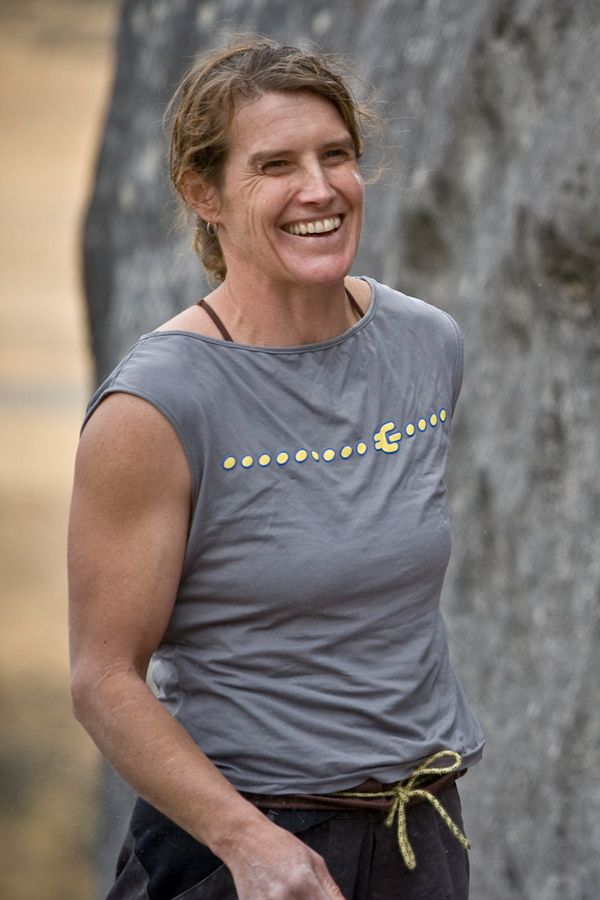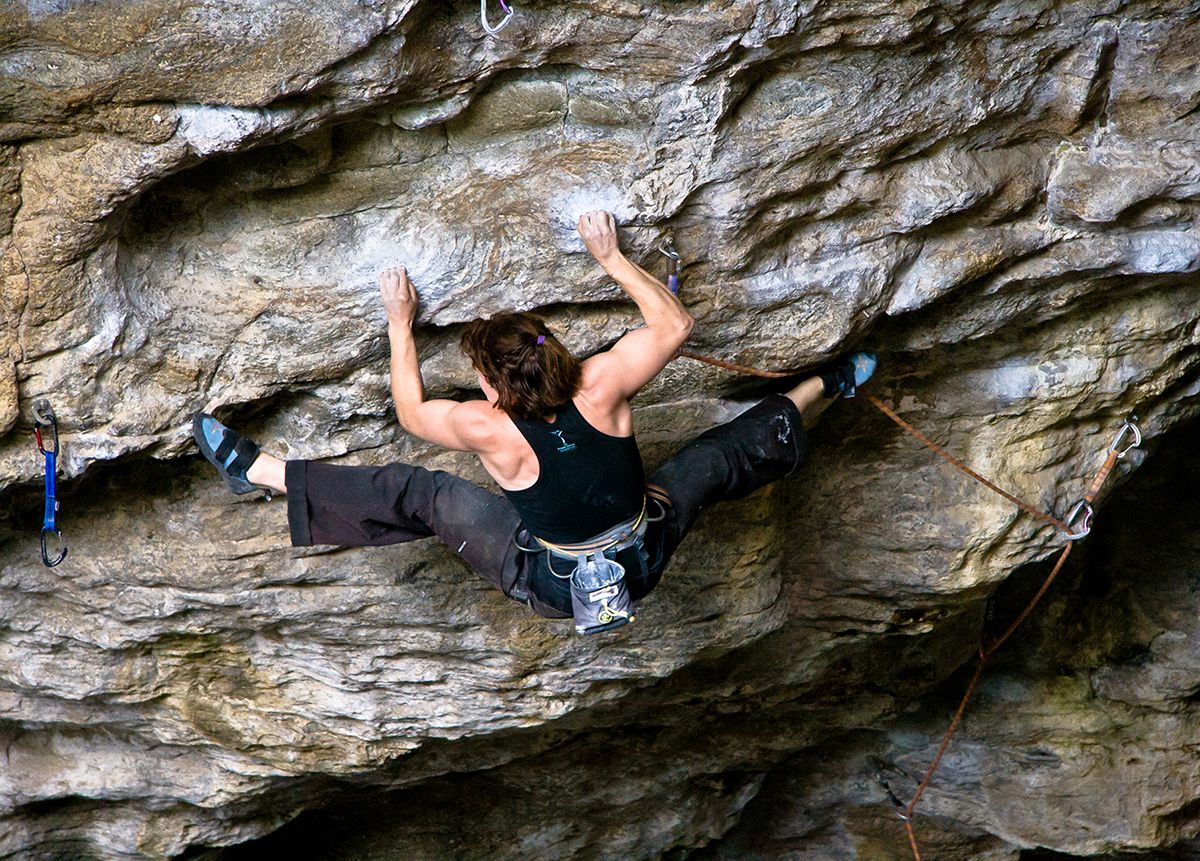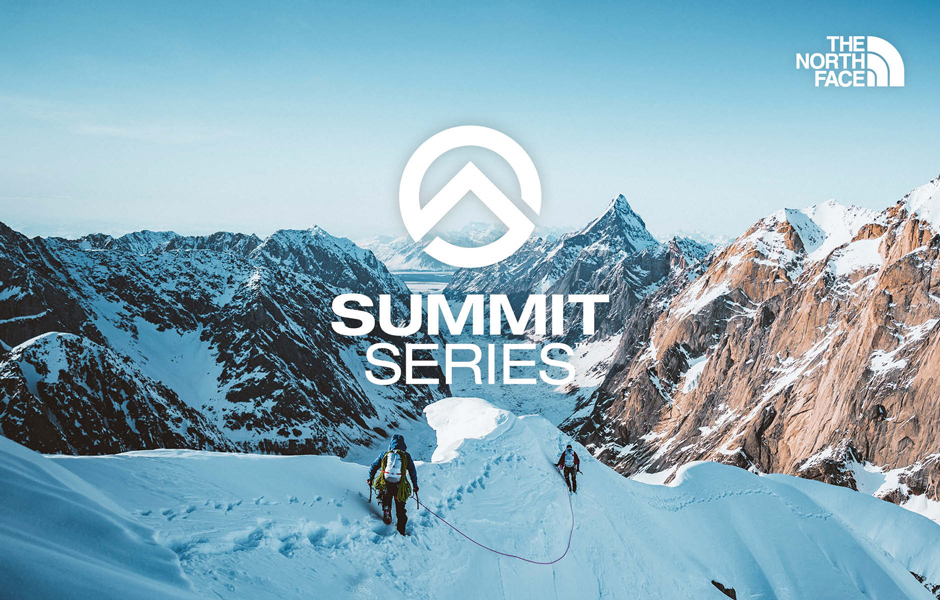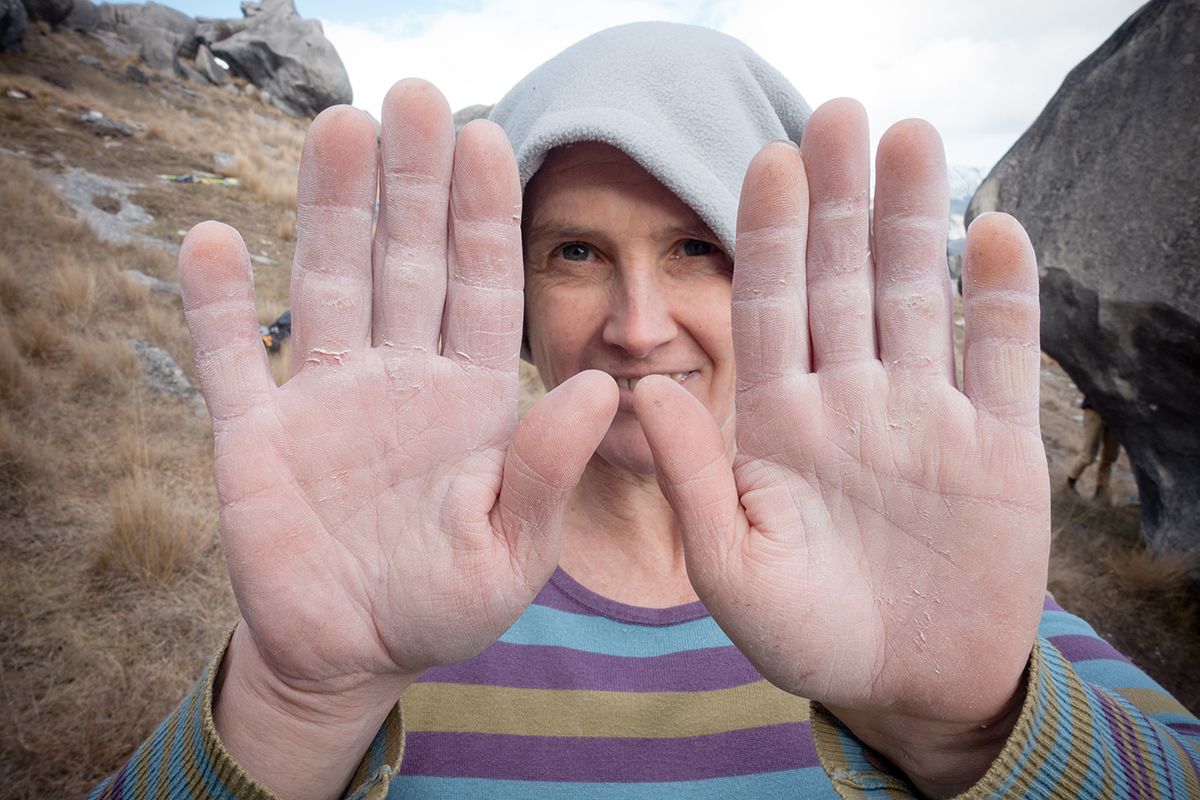
Throwback Thursday #3 – Legend: Rach Musgrave
Rach ‘the Mus’ Musgrave is arguably one of New Zealand’s most enduring hard climbers. Despite pushing 50, suffering shoulder damage that would leave the hardiest of folk crying themselves to sleep at night, and a demanding study and work schedule, she still heads out at every opportunity to get her climbing fix.
Infamous for having unlimited endurance—‘just one more go!’—her baffling, unique sequences, and not giving a f**k about what other people say, think or do, she’s been one of New Zealand's best female climbers for more than 20 years. But you wouldn't know about it, and she doesn't care about that either. She has little interest in her own stats or numbers game, and is instead far more invested in her friend’s ascents and rad adventures.
Her obsession with rockclimbing all began with a trip to Long Beach in Dunedin, while she was supposed to be studying for university exams. Rach, 21 at the time, top-roped a grade 14 trad route and was immediately hooked.

Cue the ubiquitous ‘dirt-bagging’ years. After finishing university, she moved to Tauranga, picking kiwifruit for a living. Living in a caravan with Colin Pohl, Dave Vass, and Roland Foster, life was all about going climbing as much as possible. Days off were spent at either Wharepapa, or Roland’s ‘bouldering wall’ at his parent’s place—a concrete block wall with monos drilled into it, and using the mortar cracks as footholds, ‘I couldn’t do any of the “up” problems, so I used to just try and go round and round. It was really hard and horrid.’ Having no harness at first meant all the climbs at Wharepapa were soloed, ‘we called them boulder problems, but they were routes. We never had any mats.’
Within a few short years, Rachel’s first grade 28 went down ‘I’ve always been a “dogger”, I sit on every bolt and work out all the moves until I’m ready to redpoint. I think you can progress through the grades quite quickly doing it like that.’ Since then she’s lost count of how many 28s she’s climbed—her best guess is around 30.
With her intense determination, fingers of steel, and ninja-like footwork, Rach has achieved a hefty tick list in recent years, highlights including Troglodyte (30), Bogus Machismo (29), and Attack Surge (29) at The Cave; No Country for Old Men (29), Tantalus (29), Hell Boy (28) and The Crystal Method (27) at Little Babylon; Grooverider (V8) at Flock Hill; and Anthrax (V8) at Quantum Field (with the slab top-out covered in ice). Perhaps what’s most laudable about this list is that most were sent post 40 years of age, giving us younger and still-yet-to-achieve-their-best climbers great hope!
Rach attributes her achievements to having had a consistent climbing partner at the time and ‘trying really, really hard, and being really fit.’ Visualising routes is also a key component ‘I imagine myself climbing a route and how tired I’ll be at every point. I don’t imagine myself climbing things perfectly, I imagine being tired and having to really try.’ Years of experience have taught her to understand exactly how much she’s got left in the tank ‘I can get to a point and I know I’ve got enough to finish, even if I’m tired.’ Being an expert at finding and remembering sequences and beta is also crucial—key skills she thinks all climbers should concentrate on fine-tuning—along with saving energy and being efficient ‘I can still remember sequences from ten years ago. I think you’ve got to commit to a sequence quite early on, you can waste a lot of energy trying lots of different things.’
Having never been particularly interested in systematic training, Rach instead focussed on being really fit and simply going climbing as much as possible ‘I’ve never done finger-boarding or pull-ups or anything like that. I did a lot of cardiovascular exercise, cycling and running. Training for me was just going climbing.’ An athletic past of gymnastics and competitive horse-riding no doubt helped set her up well for a future in climbing.
Instead, it’s always been more about having fun and trying hard, along with simply enjoying the process and not taking yourself too seriously, ‘if you’re not enjoying it, there’s something wrong. I feel better when I’m climbing. I’m always happy when I know I’ve tried my best, I only get disappointed if I feel I haven’t tried hard enough.’
Are there ever climbing days that aren’t fun? ‘No. There used to be, when I was very young, but I learnt early on not to agonise over failure, and not to take myself too seriously. Just have fun, and don’t go home grumpy.’
Rach has also passed on her vast climbing experience and endless enthusiasm to the next generation of climbers. She was involved in coaching the Flying Geckos, the youth programme based out of Christchurch, for around six years. This programme has produced some exceptional climbers, which is testament to Rach’s climbing philosophy of enjoyment, as well as her skill and knowledge of the sport.

For Rachel, one of the most enjoyable aspects of rock climbing is being part of her friend’s successes ‘my best days are when other people have climbed something and I’ve got really psyched. I think it’s really important to have friends around you that are doing stuff and are psyched. The psych builds, and I feed off that. I love seeing my friends get up things, it’s rad.’
Speaking of ‘rad’, what or who does Rachel consider rad? ‘Someone who tries really, really hard is rad. Someone who is scared of falling off but still wants to climb and push themselves is rad. People who have families and careers and still find time to climb are rad. Derek (Thatcher), James (Morris), Zac (Orme), the bouldering we all did up at Flock Hill, when everyone was doing new lines all the time, that was rad. Zac doing Horsemen of the Apocalypse (V10), Derek doing just about everything, like Colossus (33) at Little Babylon, that was rad. He’s still so psyched. James doing Mortality Sequence (V11), that was rad. Matt (Evrard) doing Hercules (29) and Cyrus the Great (30) at Babylon was rad. They’re all rad, those guys.’
Having a vision for new routes, and putting the work into developing them, is also something that Rachel has great respect for ‘I’m not really a new-router. I’ve done a few, but I just find it too much hard work! Jon Sedon, he puts up great routes, every time I see a Jon Sedon route I have to climb it. They’re always interesting. He has a good eye for a line.’
And her raddest sends? ‘Probably Hell Boy (28, Little Babylon). I struggled so much on it, mentally, physically. It was really scary. I had to miss out clips because I was too pumped, and I was taking really big whippers. I lost my confidence and got really nervous and scared every time I went for the redpoint. I got psyched out and had to try so hard. Turns out I just needed a few days rest... That was a lesson learned! Grooverider (V8, Flock Hill) was probably the hardest boulder I’ve done. Took me about a year. I would try every time I went up, in the sun. There’s this left-arm press, and I’d get into the position to press and nothing would happen. I’d just be there shaking, and I couldn’t move up, and gradually I’d start to press and almost get my arm straight. Derek told me to do some press-ups to train for it, but I never did! Eventually it was cold, and I just did it.’
As one might expect, more than 27 years of climbing and mountaineering comes with a fair few ‘epics’. There was the time she nearly died posing for a photograph ‘we were on our way down off Mt Talbot. The photo involved me going out on this ledge and pretending to climb up this amazing finger crack on a slab, above a huge dropoff. I got out there, and completely forgot where I was, and started actually climbing this crack. I was wearing plastic boots and a big pack. My foot slipped and I fell off. I thought I was going to land back on the ledge, but because I was wearing a pack I went headfirst off the ledge. I bounced and somersaulted three times—I wasn’t wearing a helmet. The first time I bounced I was heading head-first for a ledge, I remember thinking ‘don’t hit your head’ so I put my arm up above my head and the impact broke my shoulder. Then I bounced again. I distinctly remember, on the third bounce, thinking to myself ‘you’ve gotta stop bouncing’. A friend of mine had been killed in the mountains not long before, and I remember thinking ‘this must be what Danny felt like, just before he died.’ I remember thinking really strongly ‘NO’. I turned myself around in mid-air, and landed on a slab. I ripped all the skin off my hands trying to slow myself down, then managed to grab some snowgrass. I scrambled off to the side where my friend found me. He was sure, when he saw me go head-first off the ledge, that that was it. I seemed okay, so we went back to Homer Hut. The next day we went down to Milford where we found out that a friend of ours had died in the Cave Creek tragedy the day before, so we drove straight out to Greymouth for the funeral. I didn’t know my shoulder was broken until a few days later. There was just so much adrenalin that I didn’t even feel it. Pretty stupid. I just got so excited about climbing this beautiful crack that I forgot where I was. I think I was pretty experienced at the time, I used to do a lot of mountaineering. I am definitely lucky to be alive.’
Another lesson learned is always have a headtorch, ‘Colin (Pohl) and I had an epic coming down from the Bowen-Allan corner. We took too long, and had to solo the descent route. It got dark and we didn’t have a torch, only a lighter. We were walking along that ridge with only a lighter, trying to find the track. We got really lost, it tooks hours to get back. That was bad. I always make sure everyone has a headtorch now.’

Although not a climbing accident, de-gloving her index finger perhaps came the closest to ending Rach’s climbing career ‘I was tying up my horse. She jerked her head and the loop of rope caught my finger and de-gloved it. It happened so quickly. One minute I had a finger, and the next minute all the flesh was hanging off, and the bone and tendons were sticking out. The fingernail was still attached, that was weird. I went to A&E, and they were adamant that it had to be amputated. I wouldn’t let them. I had to stick up for myself, but they really pressured me because it’s cheaper to amputate, less after-surgery care. I told them I was a top, elite rockclimber, really talked myself up, because I thought I’ve gotta get them to understand. The doctor said to me “you should just sit back and let us do what we need to do”, and I said “if you cut my finger off I’m gonna kick you really hard in the balls.” Then he threatened to withhold my pain relief. In the end I had a lot of plastic surgery. My finger was in a cast for about three or four months, I had to sleep with it above my head. I still wake up sometimes with my finger in the air, even though it was years ago.’
Anyone who has climbed with Rachel in recent years will have noticed her unique style. That broken shoulder back in 1995 began to cause problems circa 2012, when she was doing a lot of post-quake rope access work. ‘I thought I’d torn my bicep tendon, because I couldn’t make a fist.’ An MRI scan revealed severe osteoarthritis, three fractures that have never healed properly, over-calcification and bony growths, and no cartilage left whatsoever. ‘It’s pretty f****d. The doctor said it looked like the shoulder of a 70 year old.’ Learning just how far she can push it, knowing when to stop and rest, and finding her own way of moving has enabled her to continue climbing, ‘I just have to find different ways of doing moves. I can’t do things the way other people do them, I have to find my own sequence. People give me beta, and it never works. I’ve learnt to take it easy, and be more strategic. To just enjoy it and make the most of what I can do.’ Daily yoga is also essential for mobility. The doctors say just keep on climbing, because it’ll seize up as soon as she stops moving. Aspects of climbing, such as hanging on straight arms, are actually really good for the injury, ‘traction is really good for the joint, it creates space.’
Even after nearly 30 years of climbing, Rachel isn’t planning to slow down anytime soon ‘I’d like to go on a road-trip through the States, to the Red River Gorge. And to Rocklands, and Fontainebleau.’ So what keeps the psych going after all this time? ‘I still have projects! I still love climbing things that I find hard, and then doing them, it’s a great feeling. I still enjoy the actual process, I think that’s really important, not so much being focussed on the success but actually enjoying working things. I have unfinished business on Dracula (30, The Cave) and Xerxes (30, Little Babylon). I would love to have the time to try and climb them again because I think I got pretty close.’
‘I think I’ve still got a few years left… If I weren’t injured I’d still be climbing hard, it’s only my shoulder that’s holding me back. There will come a day when I can’t climb anymore, but I think it’s a few years away yet.’
And then? ‘I’ll ride my horse a lot.’
By Erin Stewart
This piece originally appeared in The Climber #102 (summer, 2017/18).